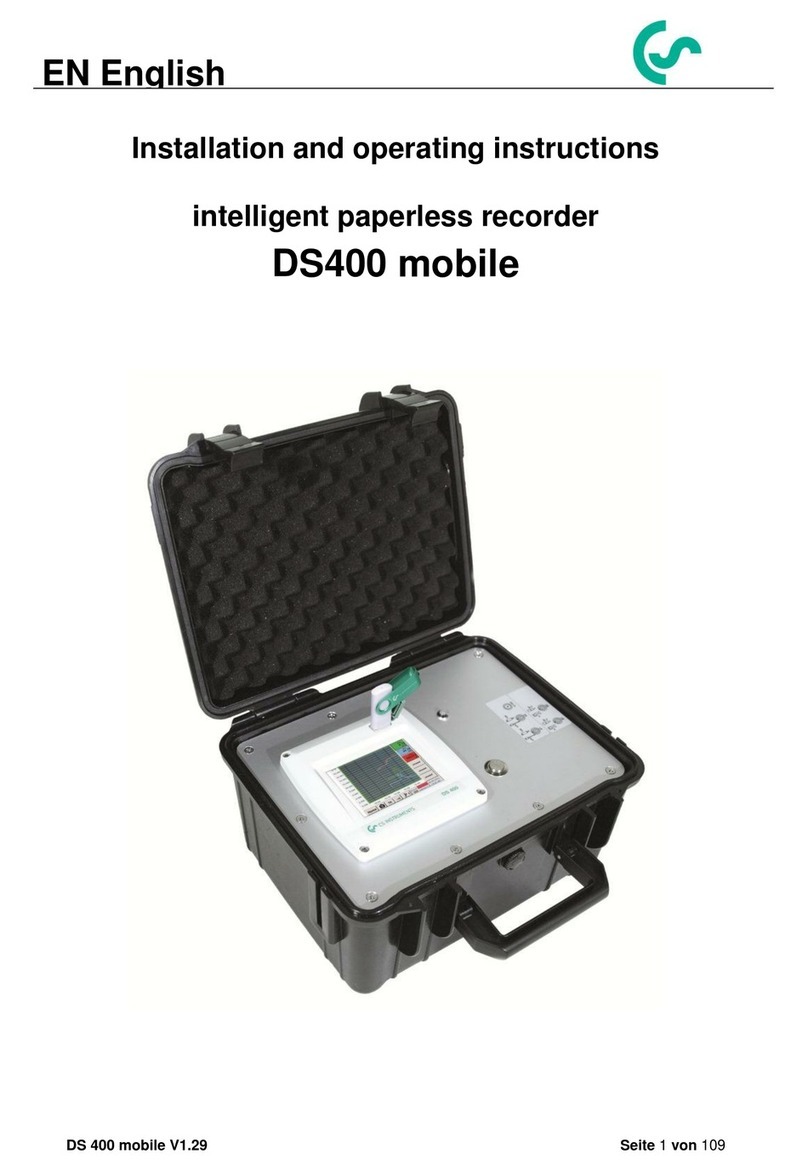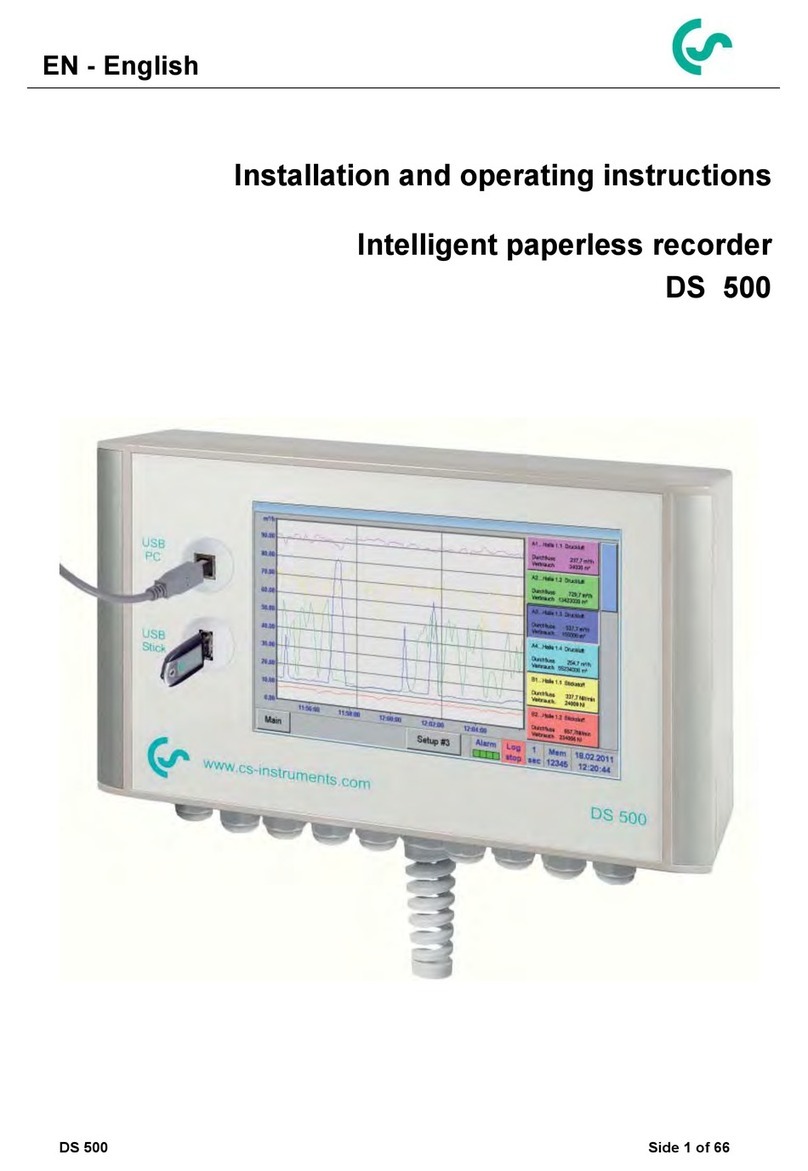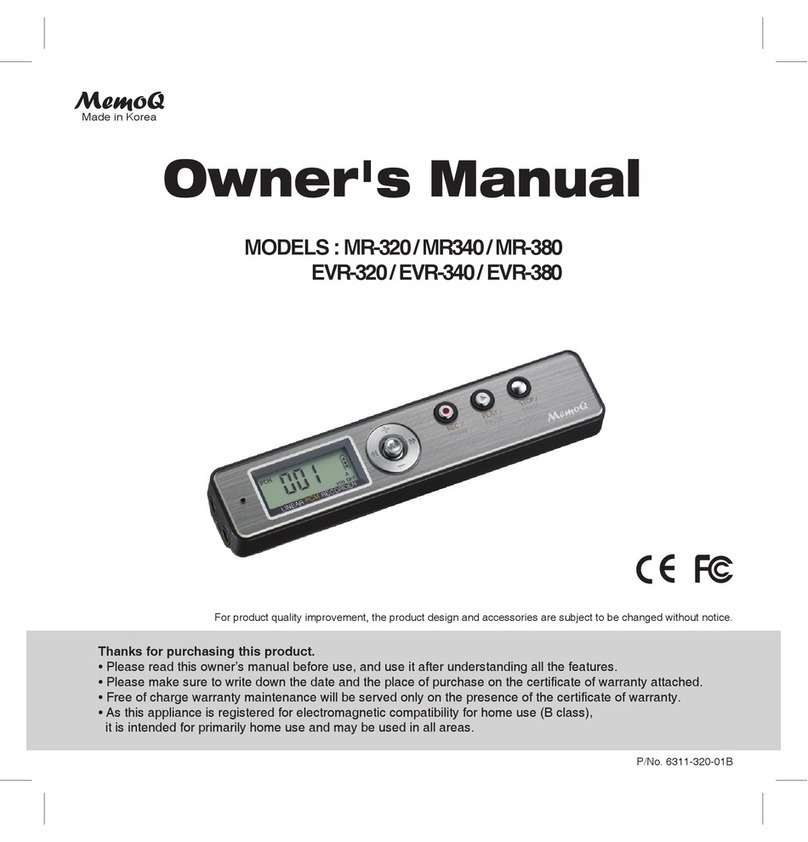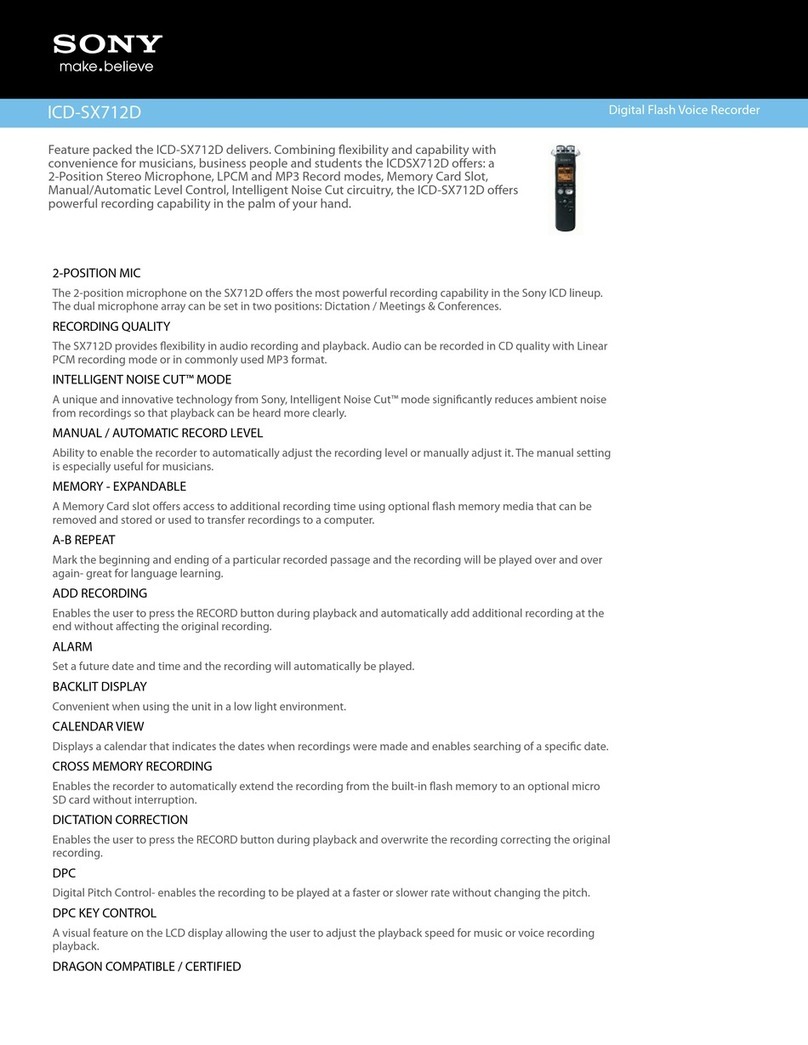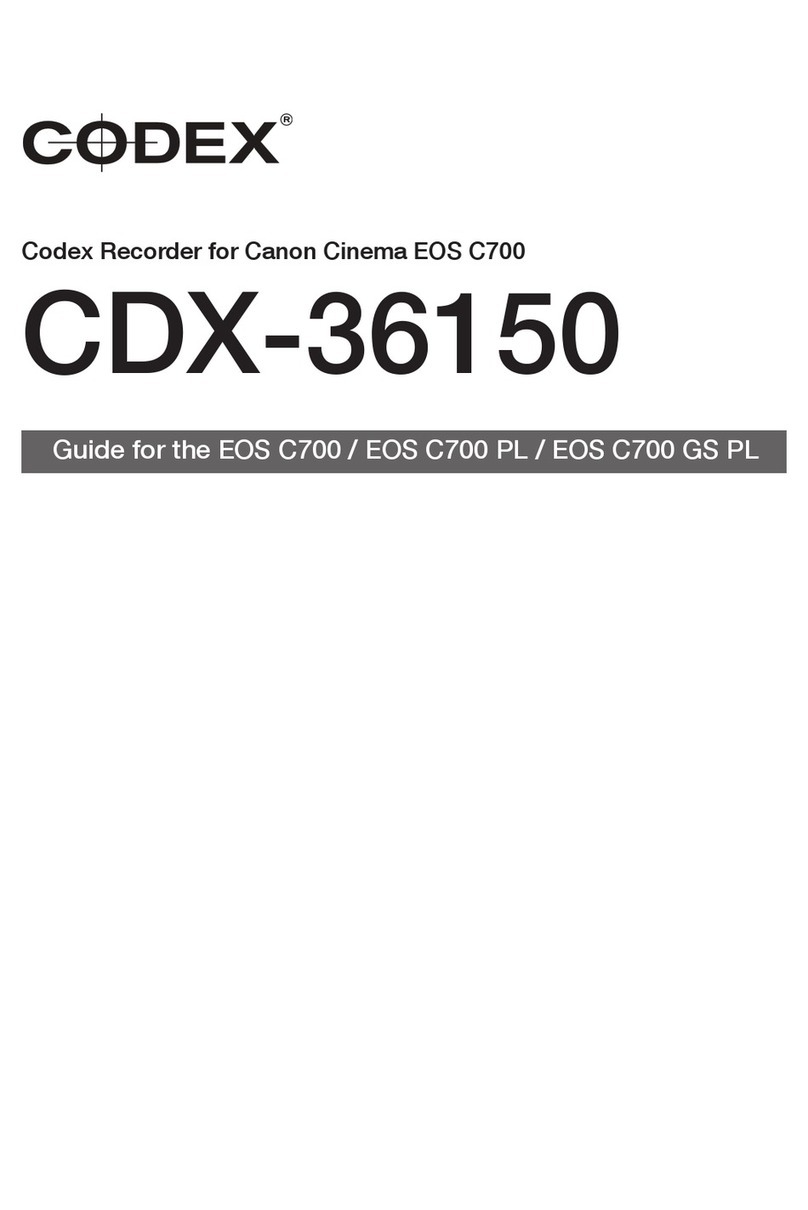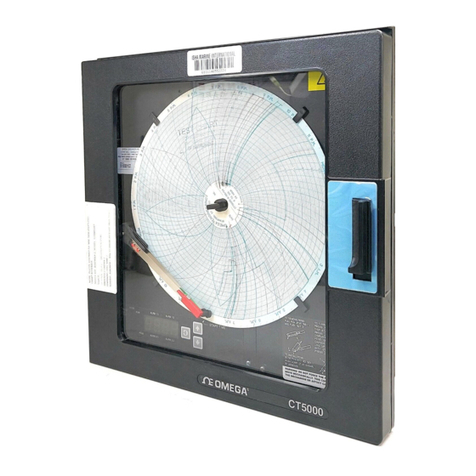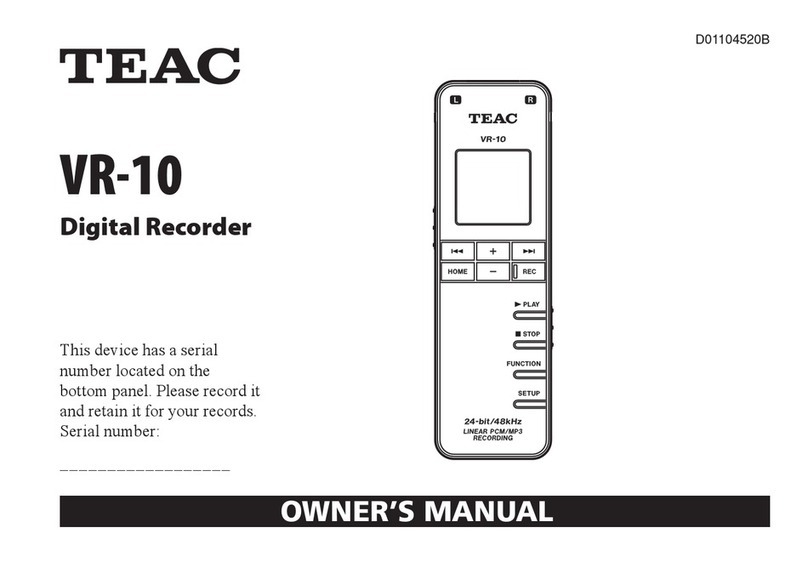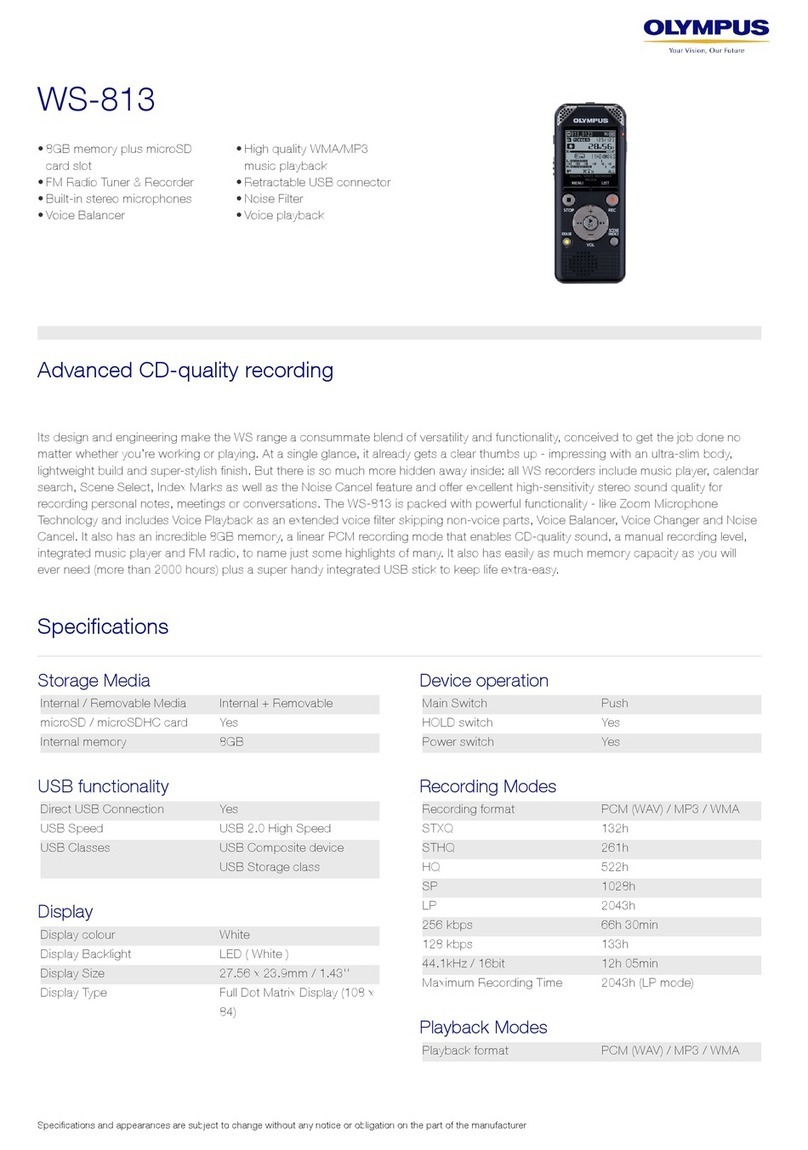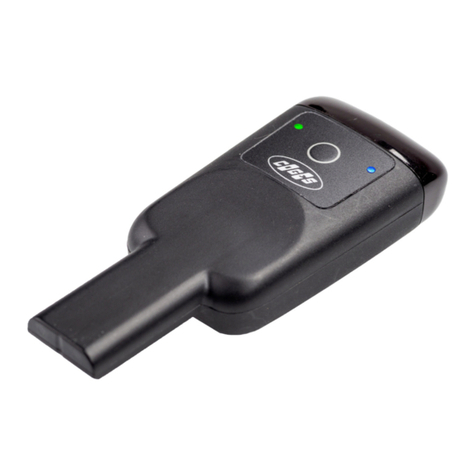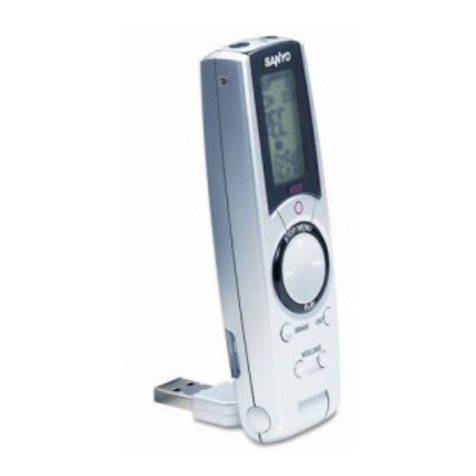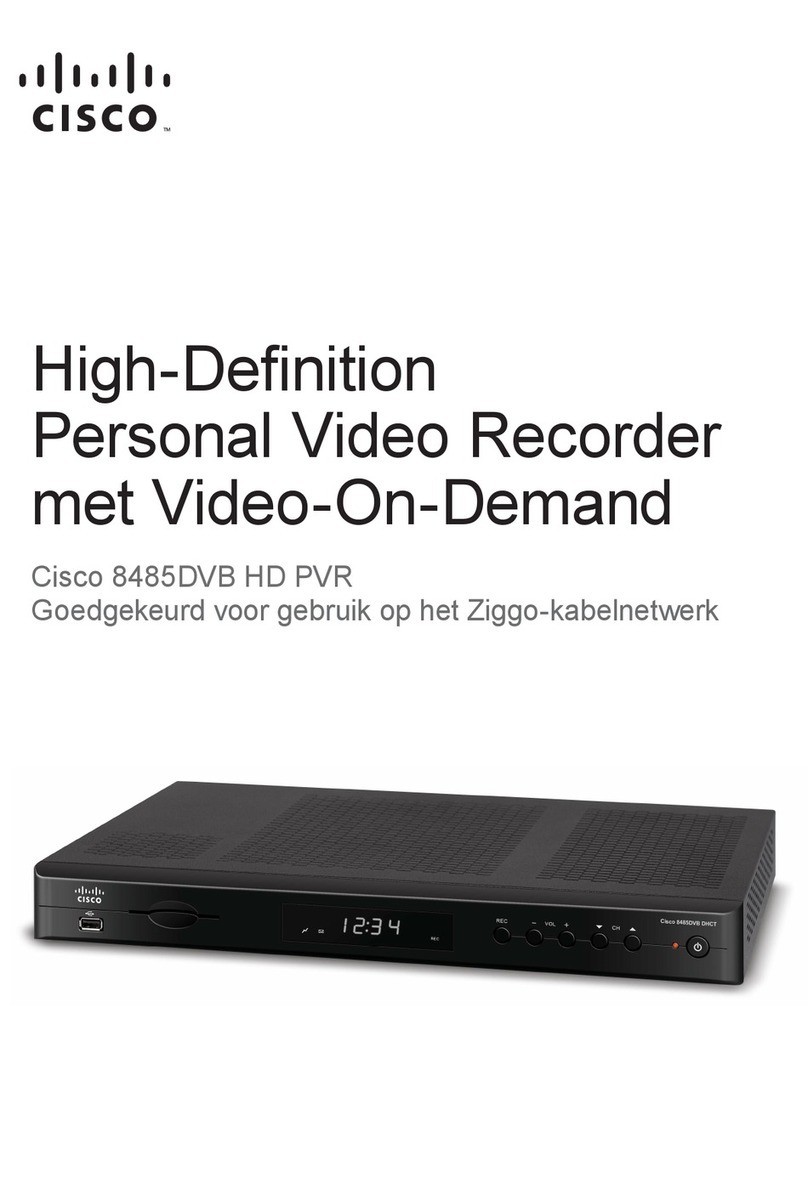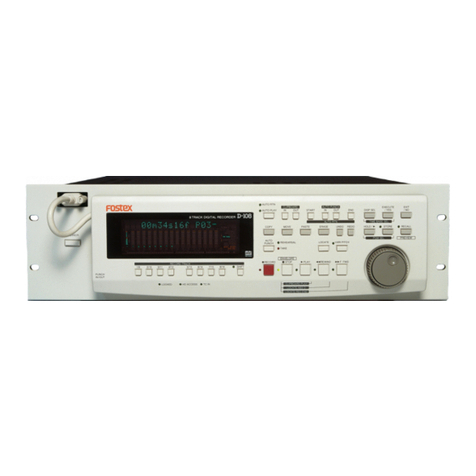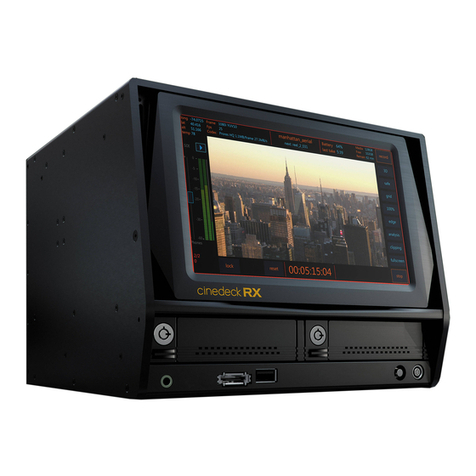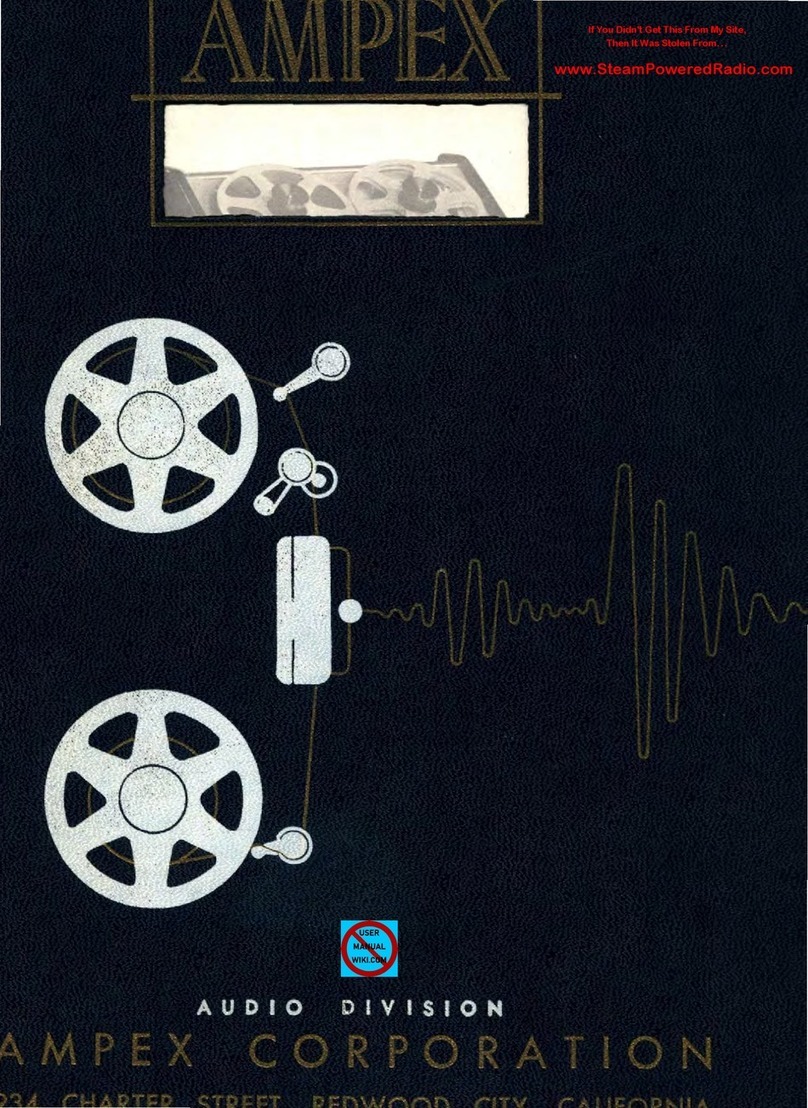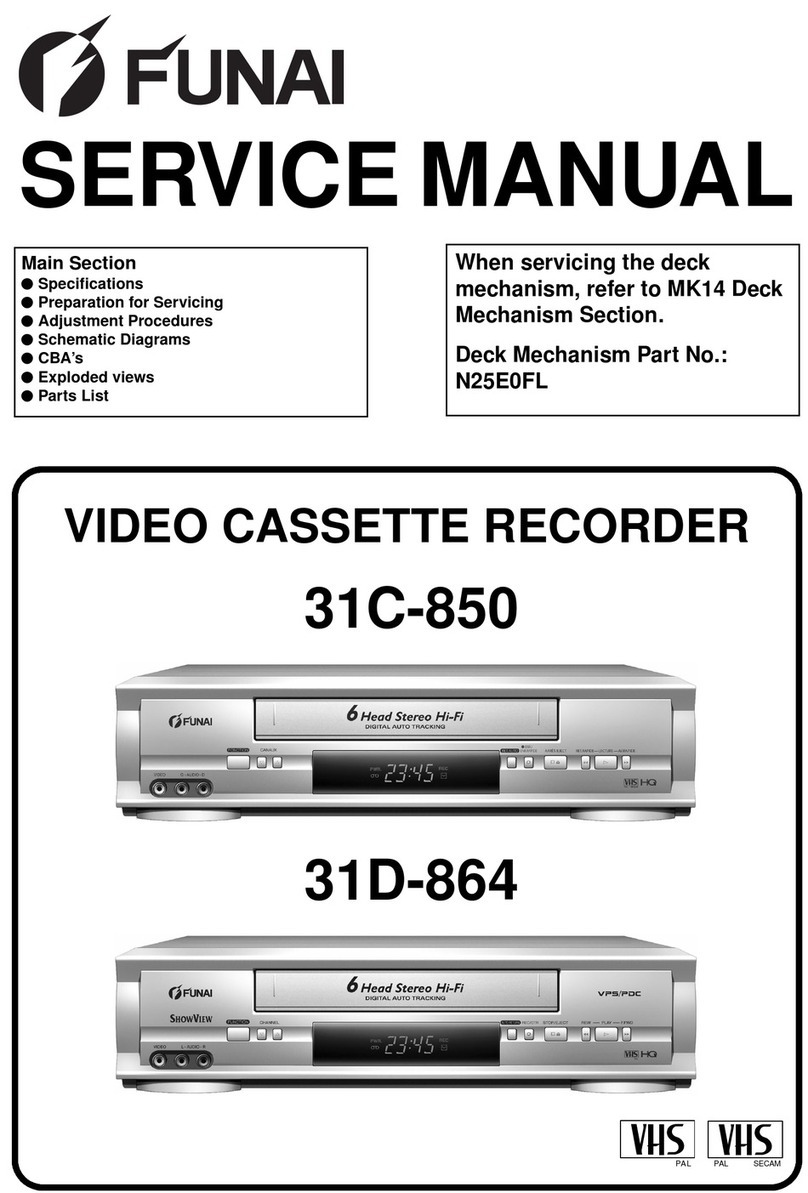CS Instruments DS400 User manual

DS 400 V1.31 Page 1of 119
Installation and operating instructions
intelligent paperless recorder DS400
Including
EN English
Short-form instruction manual
flow station
Short-form instruction manual
dew point set

Foreword
DS 400 V1.31 Page 2of 119
I. Foreword
Dear customer,
thank you very much for deciding in favour of the DS 400. Please read this
installation and operation manual carefully before mounting and initiating the device
and follow our advice. A riskless operation and a correct functioning of the DS 400
are only guaranteed in case of careful observation of the described instructions and
notes
Sales Office South / Geschäftsstelle Süd
Zindelsteiner Str. 15
D-78052 VS-Tannheim
Tel.: +49 (0) 7705 978 99 0
Fax: +49 (0) 7705 978 99 20
Mail: info@cs-instruments.com
Web: http://www.cs-instruments.com
Sales Office North / Geschäftsstelle Nord
Am Oxer 28c
D-24955 Harrislee
Tel.: +49 (0) 461 700 20 25
Fax: +49 (0) 461 700 20 26
Mail: info@cs-instruments.com
Web: http://www.cs-instruments.com

Table of Contents
DS 400 V1.31 Page 3of 119
II. Table of Contents
II. Table of Contents.........................................................................................................3
1Safety instructions ..........................................................................................................6
1.1 General.................................................................................................................................... 6
1.2 Installation .............................................................................................................................. 7
2Short-form instruction manual Flow station DS 400....................................................9
2.1 Flow station DS 400 with flow sensors VA 5xx................................................................... 9
3Short-form instruction manual dew point set DS 400................................................10
3.1 Connection diagram for DS 400 with FA 5xx .................................................................... 10
3.2 Dew point set DS 400 with alarm unit (option).................................................................. 11
4Application area.............................................................................................................12
5Intended use...................................................................................................................12
6Technical data DS 400...................................................................................................13
7Input signal.....................................................................................................................14
8Cable cross-section.......................................................................................................14
8.1 Power supply 100 - 240 VAC, 50 - 60 Hz, special version 24 VDC:................................. 14
8.2 Sensor circuit points/Output signal:.................................................................................. 14
9Panel / Wall mounting ...................................................................................................15
10 Connection diagrams DS 400....................................................................................17
10.1 Connections Inputs „A1 – B2“ (Analog- und Digital-Channels)...................................... 17
10.2 Connection input „D“ (galv. isolated Impulse output / Impulse signal forwarding support pins ) ..... 18
10.2.1 Basic version (Support pins for impulse forwarding)....................................................... 18
10.2.2 Option gal. isolated impulse............................................................................................. 18
10.3 Connection input „E“ (RS485 -- Modbus) (Slave Output)............................................. 18
10.4 Connection inputs „A - C“ ´Power supply and 2x Alarmrelais........................................ 19
11 Connection diagrams of the different sensor types ...............................................20
11.1 Connection for CS dew point sensors Series FA 415 / FA 300....................................... 20
11.2 Connection for dew point- and consumption sensors, series FA/VA 400..................... 21
11.3 Connection for dew point- and consumption sensors, series FA/VA 5xx..................... 21
11.4 Connection pulse sensors.................................................................................................. 22
11.5 Analogue two-, three-, and four-wire current signal ........................................................ 23
11.6 Three- and four-wire power supply 0 - 1/10/30 VDC......................................................... 26
11.7 Two-, three-, and four-wire connector pin assignments for PT100/PT1000/KTY81 .... 27
11.8 Connection with RS485....................................................................................................... 27

Table of Contents
DS 400 V1.31 Page 4of 119
12 Connect the DS 400 with a PC...................................................................................28
13 Operation DS 400........................................................................................................29
13.1 Main menu (Home)............................................................................................................... 29
13.1.1 Initialization...................................................................................................................... 29
13.1.2 Main menu after initialization........................................................................................... 30
13.2 Settings................................................................................................................................. 31
13.2.1 Password-Settings........................................................................................................... 31
13.2.2 Sensor-Settings............................................................................................................... 32
13.2.2.1 Choice of the sensor type (For example type CS-Digital sensor)............................ 32
13.2.2.2 Name the measurement data and define the decimal places.................................. 34
13.2.2.3 Recording measurement data.................................................................................. 34
13.2.2.4 Alarm-Settings.......................................................................................................... 35
13.2.2.5 More Settings (scale analogue output)..................................................................... 37
13.2.2.6 Dew Point Sensor FA 400 / FA 410 of type CS-Digital (SDI Bus)............................ 38
13.2.2.7 Flow sensor VA 400 / VA 420 of type CS-Digital (SDI Bus)..................................... 39
13.2.2.8 Dew Point Sensor FA 500 / FA 510 of type FA 5xx (RS 485 Modbus).................... 42
13.2.2.8.1 Settings Dew point sensor FA 500 / FA 510 ........................................................ 43
13.2.2.8.2 Definition of the System pressure (relative pressure value)................................. 43
13.2.2.8.3 Definition of Reference pressure (absolute pressure value)............................... 44
13.2.2.8.4 Calibration ............................................................................................................ 45
13.2.2.8.5 More Settings Analogue output 4-20mA ............................................................ 45
13.2.2.9 Flow sensor of type VA 5xx (RS 485 Modbus)......................................................... 46
13.2.2.9.1 Settings for Flow sensor VA 5xx .......................................................................... 47
13.2.2.9.2 Settings analogue output 4-20mA of VA 5xx........................................................ 51
13.2.2.9.3 Settings Pulse / Alarm output of VA 5xx.............................................................. 52
13.2.2.9.4 Settings ZeroPoint or Low Flow Cut off for VA 5xx.............................................. 54
13.2.2.10 Configuration of Analog-Sensors ............................................................................ 55
13.2.2.10.1 Type 0 - 1/10/30 Volt und 0/4 – 20 mA................................................................ 55
13.2.2.10.2 Type PT100x and KTY81..................................................................................... 57
13.2.2.10.3 Type Pulse (Pulse ration)..................................................................................... 58
13.2.2.10.4 Type „No Sensor“................................................................................................. 60
13.2.2.11 Type Modbus........................................................................................................... 61
13.2.2.11.1 Selection and activation of Sensor-Type Modbus................................................ 61
13.2.2.11.2 Modbus Settings................................................................................................... 61
13.2.2.12 Custom Sensor........................................................................................................ 65
13.2.2.12.1 Sensor settings saving ......................................................................................... 65
13.2.2.12.2 Sensor settings import.......................................................................................... 66
13.2.3 Device Settings................................................................................................................ 67
13.2.3.1 Language.................................................................................................................. 67
13.2.3.2 Date & Time.............................................................................................................. 68
13.2.3.3 Network-Settings ...................................................................................................... 69
13.2.3.4 ModBus (Slave)........................................................................................................ 70
13.2.3.5 Relay Settings .......................................................................................................... 71
13.2.3.6 SD-Card.................................................................................................................... 72
13.2.3.7 System...................................................................................................................... 73
13.2.3.7.1 Save system settings............................................................................................ 73
13.2.3.7.2 System update...................................................................................................... 73
13.2.3.7.3 Check for Updates................................................................................................ 74
13.2.3.7.4 Update Firmware.................................................................................................. 74
13.2.3.7.5 Update Channels.................................................................................................. 74
13.2.3.7.6 Factory Reset ....................................................................................................... 75
13.2.3.8 Calibrate touch-screen ............................................................................................. 76
13.2.4 Set backlight .................................................................................................................... 76
13.2.5 Cleaning........................................................................................................................... 77
13.2.6 System-Status.................................................................................................................. 77
13.2.7 About DS 400................................................................................................................... 77

Table of Contents
DS 400 V1.31 Page 5of 119
13.2.8 Virtual Channels (optional) .............................................................................................. 78
13.2.8.1 Option „Virtual Channels“ activation......................................................................... 78
13.2.8.2 Virtual Channels settings.......................................................................................... 79
13.2.8.3 Selection of Sensor-type .......................................................................................... 79
13.2.8.4 Configuration of each single virtual value................................................................. 80
13.2.8.4.1 Activation of a single virtual value........................................................................ 80
13.2.8.4.2 Definition of Operands.......................................................................................... 81
13.2.8.4.3 Definition of Operations........................................................................................ 82
13.2.8.4.4 Definition of Unit................................................................................................... 82
13.2.8.5 Value name, resolution of decimal places and recording of values......................... 84
13.2.8.6 Calculation Example „Specific Performance“.......................................................... 85
13.2.9 Analog Total (optional)..................................................................................................... 87
13.2.9.1 Option „Analog Total“ activation............................................................................... 87
13.2.9.2 Selection of sensor type........................................................................................... 88
13.2.10 Webserver (optional).................................................................................................... 89
13.2.10.1 Option „Webserver“ activation................................................................................. 89
13.2.10.2 Setup the Webserver Admin Password................................................................... 90
13.2.10.3 Webserver start....................................................................................................... 90
13.2.10.4 Webserver assignment of rights (Administrator)..................................................... 91
13.2.10.4.1 Accessrights Webserver....................................................................................... 91
13.2.10.5 Webserver Login ..................................................................................................... 91
13.2.10.6 New users and password........................................................................................ 92
13.2.10.7 Webserver E-Mail Configuration (Administrator)..................................................... 92
13.2.10.8 Webserver MailOnAlarm (Administrator & Operator).............................................. 94
13.2.10.9 Webserver Chart (Administrator, Operator & User) ................................................ 95
13.2.10.10 Webserver Screen................................................................................................. 96
13.2.10.11 Webserver Actuals ................................................................................................ 97
13.2.10.12 Webserver Status.................................................................................................. 97
13.2.11 Data Logger (optional) ................................................................................................. 98
13.2.11.1 Option „Data Logger“ activation............................................................................... 98
13.2.11.2 Data logger Settings................................................................................................ 98
13.3 Chart.................................................................................................................................... 102
13.4 Chart / Real time values..................................................................................................... 106
13.5 Channels............................................................................................................................. 108
13.6 Real time values................................................................................................................. 109
13.7 Alarm-Overview.................................................................................................................. 110
13.8 Export /Import..................................................................................................................... 111
13.8.1 Export Logger data........................................................................................................ 111
13.8.2 Export System Settings ................................................................................................. 113
13.8.3 Import System Settings.................................................................................................. 114
13.9 Screenshot function .......................................................................................................... 115
13.9.1 Screenshot saving......................................................................................................... 115
13.9.2 Screenshots export........................................................................................................ 116
14 Cleaning ....................................................................................................................118

Safety instructions
DS 400 V1.31 Page 6of 119
1 Safety instructions
1.1 General
Please check whether this manual corresponds with the device type.
Please attend to all notes indicated in this instruction manual. It contains essential information
which has to be followed during installation, operation and maintenance. Therefore,
this
instruction manual has to be read categorically by the technic
ian as well as by the responsible
user/qualified personnel before installation, initiation and maintenance.
This instruction manual has to be available at any time at the operation site of the DS 400.
Regional and national regulations respectively, have to be observed in addition to this instruction
manual if necessary.
In case of anyobscurities or questions with regard to this manual or the instrumentplease contact
CS Instruments GmbH.
Warning!
Inadmissible operating parameters!
Undercutting and
exceeding respectively of limit values may cause danger to persons
and material and may lead to functional and operational disturbances.
Measures:
• Make sure that the DS 400 is only operated within the admissible limit values indicated on the
type label.
• Strict observance of the performance data of the DS 400 in connection with the application.
• Do not exceed the admissible storage and transportation temperature.
Further safety instructions:
• Attention should also be paid to the applicable national regulations and safety instructions during
installation and operation.
• The use of the DS 400 in explosive/hazardous areas is not allowed.
Additional remarks:
• Do not overheat the instrument!
• Change of battery and SD-Card are only allowed to be carried out by authorized qualified personnel
and in strain less state
Attention!
Malfunctions at the DS 400!
Faulty installation and insufficient maintenance may lead to malfunctions of the DS
400
which may affect the measuring results and which may lead to misinterpretations.

Safety Instructions
DS 400 V1.31 Page 7of 119
1.2 Installation
Warning!
Supply voltage!
Contact with supply voltage carrying non-
insulated parts may cause an electric shock
with injury and death.
Measures:
• Note all applicable regulations for electrical installations (e.g. VDE 0100)!
• Carry out maintenance only in strain less state!
• All electric works are only allowed to be carried out by authorized qualified personnel.
Danger!
Missing earth connection!
When the earth connection (protective earth) is missing, there is the
risk in the event of malfunction, that contactable, conductive
components may carry supply voltage. Touching of such parts leads
to an electric shock with injuries and death.
It is imperative to connect the plant to earth or to connect the
protective conductor according to the regulations.
Do not use plug adapters at the power plug.
Have the power plug replaced by qualified skilled persons,
if required.

Safety Instructions
DS 400 V1.31 Page 8of 119
The plug of the power supply cord is used as a separator. This separator must be clearly recognizable
and easily accessible by the user. A plug connector with a CEE7/7 system is necessary.
All the electrical lines carrying supply voltage or another voltage that is dangerous in the case of con-
tact (power supply cord, alarm and indicator relays), must additionally be equipped with double or
reinforced insulation (EN 61010-1). This can be ensured by using plastic-sheathed cables, a second
insulation (e.g. flexible insulating tubing), or correspondingly suitable lines with reinforced insulation.
The connecting cables can be equipped, for example, with flexible insulating tubing.
The additional flexible insulating tubing must withstand the electrical and mechanical stresses that can
occur during the intended use (see EN 61010-1, Clause 6.7.2.2.1).
DANGER!
Supply voltage!
When wiring the connecting lead, it must be ensured that the double or
reinforced insulation be-tween the electric circuits that are dangerous in the
case of contact and the contactable secondary circuit remains maintained.
NOTE!
The additional insulation must be suitable for a test voltage of 1500 V
alternating current.
The thickness of the insulation must be at least 0.016 inch.
E.g. flexible insulating tubing, type BIS 85 (Bierther GmbH).
The additional insulation of the connecting leads (mains connection, alarm and indicator relays) can
be implemented as follows:
3 2 1
(1) - Terminals (connectors)
(2) – Flexible insulating tubing for the connecting leads
(3) – Connecting cable

Short form instructions
DS 400 V1.31 Page 9of 119
2 Short-form instruction manual Flow station DS 400
By/With consumption sensors and dew point sensors from CS Instruments there is the possibility to
provide values as analogue current signal 4 – 20 mA for further working process.
The measurement/reading of the current signal for an external PLC/ZLT or external third-party display
is explained in the connection diagrams.
BY using of the CS Instruments connection cables 0553.0104 or 0553.0105 please follow pining
Pin 1 Pin 2 Pin 3 Pin 4 Pin 5
Bown White Blue Black Grey
Connector (A) VA500/VA520 + VB Modbus A - VB Modbus B +I (4-20mA)
Connector FA 510
+ VB
Modbus A - VB Modbus B +I (4-20mA)
Connector FA 515
+ VB
- VB
2.1 Flow station DS 400 with flow sensors VA 5xx
1
2
3
4
VA500
5
1
2
3
4
5
Connector AConnector B
RS485 (A)
Pulse Input
4 5 6 7 8
+24Vdc
RS485 (B)
Loop
SDI
2
-Vb Gnd
13
Loop
+
-
4 5 6 7
2
13
Pin
A1 – B2
Digitalboard
D
Support pins
Z
Impulsausgang Galv. getrennt
Pulse output galv. isolated
Pin
Pin
Pin
Pin
Pin
Pin
4 – 20mA
Braun/Brown
Blau/Blue
Weiss/White
Schwarz/Black
Schwarz/Black
Grau/Grey
2
Grau/Grey
DS400 internal bridge
Necessary adjustments (see chapter 13.2.2 Sensor settings)
àAdjust inner diameter of the pipe (menu settings -sensor settings - A1)
àDS400 automatically scales the analogue output 4…20 mA to the
respective values for m³/h, m³/min and so on.
àReference temperature and reference pressure (factory setting 20 °C, 1000 hPa):
àAll volume flow values (m³/h) and consumption values indicated in the display are
related to 20 °C, 1000 hPa (according to ISO 1217 intake condition)
à0 °C and 1013 hPa (=standard cubic meter) can also be entered as a reference.
àDo not enter the operation pressure or the operation temperature under reference
conditions!
Please read carefully before starting the device!
1. Do not exceed pressure range > 50 bar
2. Observe flow direction of the sensor
3. Adapter sleeve must be tightened with a torque
of 20-30 Nm
4. Observe minimum values for the inlet section
(15 x inner diameter) and for the outlet section
(5 x inner diameter)
For further information please see instruction manual VA 400.
Mounting depth

Shortform instructions
DS 400 V1.31 Page 10 of 119
3 Short-form instruction manual dew point set DS 400
3.1 Connection diagram for DS 400 with FA 5xx
1
2
3
4
FA 510
5
M12
Anschluß
RS485 (A)
Pulse Input
4 5 6 7 8
+24Vdc
RS485 (B)
Loop
SDI
2
-Vb Gnd
13
Loop
+
-
A1 – B2
Digitalboard
4 – 20mA
Braun/Brown
Blau/Blue
Weiss/White
Schwarz/Black
Grau/Grey
DS400 internal bridge
1
2
3
4
FA 515
5
M12
Anschluß
RS485 (A)
Pulse Input
4 5 6 7 8
+24Vdc
RS485 (B)
Loop
SDI
2
-Vb Gnd
13
Loop
+
-
A1 – B2
Digitalboard
4 – 20mA
Braun/Brown
Blau/Blue
DS400 internal bridge
Power supply alarm connection:
1 2 3
PE
L
N
123
NC
Com
NO
NC
Com
NO
3
12
123
NC
Com
NO
NC
Com
NO
3
1
2
C B A
NC and COM are connected at:
- alarm
- power failure
- sensor break
Please read carefully before starting the device!
1. Attention: Do not exceed pressure range of > 50 bar with standard version.
(Up to 350 bar in case of special version).
2. Important: Before installation briefly bleed the compressed air in order to remove
condensate and particles. This prevents soiling of FA 410. Standing air leads to
long measuring times.

Shortform instructions
DS 400 V1.31 Page 11 of 119
3.2 Dew point set DS 400 with alarm unit (option)
- Dew point set ready for plug in and fully configured, no further adjustments necessary.
- Alarm values are programmed on our premises:
Dew point set -20…+50 °Ctd to alarm 1: 8 °Ctd, alarm 2: 12 °Ctd
Dew point set -80…+20 °Ctd to alarm 1: -40 °Ctd, alarm 2: -35 °Ctd
in case of alarm unit option: Alarm 1 continuous red light
Alarm 2 buzzer
The alarm values can easily be changed within the DS 400
(Settings àSensor settings àA1 àAlarm see also chapter 13 .2.2.4 Alarm-Settings ).
Connection diagram Option alarm unit
Stecker C Stecker B Stecker A
0
1
2
5
4
3
blau / blue
braun / brown
rot / red
Base Light Modul
Stecker C Stecker B Stecker A
schwarz / black
braun / brown
rot / red
Base Light Modul
schwarz / black
blau / blue
2 1
Horn /Tone Module
Lampe / Lamp
0

Application Area / Intended use
DS 400 V1.31 Page 12 of 119
4 Application area
Our long-term hands-on experience in measurement and control technology was implemented in the
new DS 400.
From recording of the measured data, automatic sensor identification, indication on a big colour
screen, alerting, storage up to remote read-out via web server, all that is possible with DS 400. By
means of the CS-Soft, software alarms can be sent via SMS or e-mail.
On the big 3.5' colour screen with touch panel, all information is available at a glance.
The operation is very easy. All measured values, measured curves and threshold exceeding’s are
indicated. The progression of the curve, since the beginning of the measurement, can be viewed by
an easy slide of the finger.
The huge difference to ordinary paperless chart recorders reveals in the easy initiation as well as in
the evaluation of the measured data. All sensors are identified directly and powered by DS 400.
Everything is matched and tuned.
Consumption sensor
VA400
Clamp on
Ammeter
Consumtion counter
VA420
Dew Point
sensor FA410
Pressure
sensor
Screw-in
temperature
Probe Pt1000
Temperature
Probe Pt 100
Third Party
sensors
4… 20mA
Third Party
Sensors
RS485
Modbus RTU
Third Party
sensors
0...1V/10V
Third Party
sensors
Electricity
meter KWh
Third Party
sensors
Pulse
Alarmausgang
RS 485 (Modbus)
4- 20 mA Ausgang
5 Intended use
The DS 400 data logger serves for the stationary measured data acquisition and storage of analogue
and digital input signals.
The DS 400 data logger is exclusively designed and constructed for the proper application purpose that
is described herein and must only be used correspondingly.
A check in order to ascertain whether or not the device is suitable for the chosen employment must be
carried out by the user. It must be ensured that the medium is compatible with the components which
come into contact with it. The technical data listed in the data sheet are binding.
Improper handling or operation outside the technical specifications is impermissible. Claims of any kind
on the basis of improper use are excluded.
Versatile:
Up to 4 sensors, incl. all CS sensors
(consumption, dew point, pressure,
current, KTY, PT 100, PT 1000) are
identified automatically by DS 400.
Optional analogue sensors (0/4 - 20
mA, 0 - 1/10/30 V, pulse) can be
configured easily and quickly. Digital
sensors can be connected via
RS 485, Modbus RTU and SDI.
Flexible:
Network-compatible and
worldwide remote data
transmission via Ethernet,
integrated web server.
Alarm relay / fault
indication:
Up to 4 threshold values can be
configured freely and allocated to
2 different alarm relay. Collective
alarms are possible.

Technical data DS 400
DS 400 V1.31 Page 13 of 119
6 Technical data DS 400
Dimensions of housing 118 x 115 x 98 mm
Connections
5 x PG12 for sensors and supply, alarm relay
1 x RJ 45 Ethernet connection
Version panel mounting Cut-out panel 92 x 92 x 75 mm
Weight 545 g
Material Plastic , Front foil Polyester
Protection level IP44
Sensor inputs
4 (2x2) sensor inputs for analogue and digital sensors freely allocable.
Digital CS sensors for dew point and consumption with SDI interface
FA/VA 400 Series.
Digital third-
party sensors RS 485/Modbus RTU, other bus systems
realizable on request.
Analogue CS sensors for pressure, temperature, clamp-on ammeters
preconfigured.
Analogue third-party sensors 0/4 – 20 mA, 0 - 1/10/30 V, pulse,
Pt100/Pt1000, KTY.
Power supply for sensors
Output voltage:: 24 VDC ± 10%
Output current: a.) Digital-Board 120mA continuous operation / channel
b.) Analog-Board 120mA continuous operation for both
channels
Maximum output current over all channels: 280mA
Interfaces
USB stick USB 2.0),
Ethernet TCP
RS 485 Modbus RTU,
SDI (Serial data Interface)
other bus systems on request, web server optional
Outputs
Outputs 2 relay (max. switching voltage: 230 VAC / 30 VDC, Switching
current: min. 10mA, max. 3A) alarm management,
Relay freely programmable, collective alarm.
Analogue output, pulse in case of sensors with own signal output
looped, like e.g. VA/FA Series.
Power supply 100 – 240 VAC/50 – 60 Hz, max.power input: 23VA,
special version 24 VDC
Battery 1) CR 2032
Colour screen 3.5“-Touchpanel TFT transmissive, graphics, curves, statistics
Accuracy See sensor specifications
Operating temperature 0 – 50 °C
Storage temperature -20 bis +70°C
Data Logger
Memory size 4 GB SD memory card (micro
SD class4) Optional
Ethernet- and RS 485 Interface
(Modbus Protocol)
Optional
Webserver
Optional
Galv. Isolated Impulse output (2x)
Optional
1) Lithium manganese dioxide battery, Panasonic CR2032 / 3 V / 225 mAh

Input signals / Cable cross-sections
DS 400 V1.31 Page 14 of 119
7 Input signal
8 Cable cross-section
8.1 Power supply 100 - 240 VAC, 50 - 60 Hz, special version 24 VDC:
Cable cross section power supply: 0,75 mm²
8.2 Sensor circuit points/Output signal:
AWG16 – AWG28, cable cross-sections: 0,14 - 1,5 mm2
Cable gland clamping Range: 4-8mm
Input signal
Current signal
(0 – 20 mA / 4 – 20 mA)
internal or external
power supply
Measuring range 0 – 20 mA / 4 – 20 mA
Resolution 0,0001 mA
Accuracy ±0,03 mA ±0,05 %
Input resistance 50 Ω
Voltage signal
(0 - 1V)
Measuring range 0 - 1 V
Resolution 0,05 mV
Accuracy ±0,2 mV ±0,05 %
Input resistance 100 kΩ
Voltage signal
(0 - 10 V / 30 V)
Measuring range 0 - 10 V/30 V
Resolution 0,5 mV
Accuracy ±2 mV ±0,05 %
Input resistance 1 MΩ
RTD
Pt100
Measuring range -200 - 850 °C
Resolution 0,1 °C
Accuracy
±0,2 °C at -100 - 400 °C
±0,3 °C (further range)
RTD
Pt1000
Measuring range -200 - 850 °C
Resolution 0,1 °C
Accuracy
±0,2 °C at -100 - 400 °C
±0,3 °C ( further range )
Pulse
Measuring range minimal pulse length 100
μ
s
frequency 0 - 1 kHz
max. 30 VDC

Panel and wall mounting
DS 400 V1.31 Page 15 of 119
9 Panel / Wall mounting
The instrument can either been mounted into a panel or - if ordered with the optional wall casing - on
a wall. Please refer to the drawings below for details.
Figure: Panel and wall mountable housing

Panel and wall mounting
DS 400 V1.31 Page 16 of 119
Figure : Housing for panel mounting

Connection diagrams DS 400
DS 400 V1.31 Page 17 of 119
10 Connection diagrams DS 400
10.1 Connections Inputs „A1 – B2“ (Analog- und Digital-Channels)
(+) I
12345678
+24Vdc
-Vb Gnd
(-) V- PT-I
(+) V-PT
9
PT Supply
Loop
Loop
PT Gnd
Pulse Input
12345678
+24Vdc
-Vb Gnd
+ RS485 (A)
- RS485 (B)
Loop
Loop
SDI
Analog Board Digital Board
Depending on selected variant following combinations are possible:
combination
Channel 1 2 3 4 5 6
A1 D D D A A A
A2 D D D A A A
B1 D A A D
B2 D A A D
D = Digital-Channel A = Analog-Channel
Bridges are existing on both boards internal

Connection diagrams DS 400
DS 400 V1.31 Page 18 of 119
10.2 Connection input „D“ (galv. isolated Impulse output / Impulse signal forwarding support pins )
10.2.1 Basic version (Support pins for impulse forwarding)
1234567
Support Pin
Support Pin
Support Pin
Support Pin
Support Pin
Support Pin
Support Pin
10.2.2 Option gal. isolated impulse
4567
2
1 3
1
2
3
4
VA400
5
1
2
3
4
5
Connector AConnector B
+ RS485 (A)
Pulse Input
4567 8
+24Vdc
-RS485 (B)
Loop
SDI
2
-Vb Gnd
13
Loop
Impulse 1
Impulse 1
Impulse 2
Impulse 2
Not used
Not used
GND
Z
+
-
Impulseoutput 1
galv.isolated
A1 or B1 Digitalboard D Impulse- / Ethernetboard
Incl. gal. isolated Impulse output
4 – 20mA
Brown
Blue
Black
White
Grey
45672
13
1
2
3
4
VA400
5
1
2
3
4
5
Connector A
Connector B
+ RS485 (A)
Pulse Input
45678
+24Vdc
- RS485 (B)
Loop
SDI
2
-Vb Gnd
13
Loop
Impulse 1
Impulse 1
Impulse 2
Impulse 2
Not used
Not used
GND
+
-
Impulseoutput 2
galv.isolated
A2 or B2 Digitalboard D Impulse- / Ethernetboard
Incl. gal. isolated Impulse output
4 – 20mA
Brown
Blue
Black
White
Grey
Z
10.3 Connection input „E“ (RS485 -- Modbus) (Slave Output)
1 2 3 4 5 6
Common
RS485 (B)
RS485 (A)
Common
RS485 (B)
RS485 (A)
For systems with 2 digital boards (2x2 digital channels) on pulse output 1 could be used
either pulse input A1 or B1, as well as for pulse output 2 either pulse input A2 or B2.
It is not possible pulse to switch pulse input A1 or B1 on pulse output 2 or pulse input A2 or
B2 on pulse output 1.
Parallel wiring of the pulse inputs A1 and A2 u.B1 u.B2 is not allowed.

Connection diagrams DS 400
DS 400 V1.31 Page 19 of 119
10.4 Connection inputs „A - C“ ´Power supply and 2x Alarmrelais
Power supply: 90 - 260 VAC 50 – 60 Hz
2 x Alarm relays, max. 230VAC, 3A
1 2 3
PE
L
N
12 3
NC
Com
NO
NC
Com
NO
3
12
123
NC
Com
NO
NC
Com
NO
3
1
2
C B A
DANGER!
Supply voltage!
When wiring the connecting lead, it must be ensured that the double or
reinforced insulation be-tween the electric circuits that are dangerous in the
case of contact and the contactable secondary circuit remains maintained.
NOTE!
The additional insulation must be suitable for a test voltage of 1500 V
alternating current.
The thickness of the insulation must be at least 0.016 inch.
E.g. flexible insulating tubing, type BIS 85 (Bierther GmbH).
The additional insulation of the connecting leads (mains connection, alarm and indicator relays) can
be implemented as follows:
3 2 1
(1) - Terminals (connectors)
(2) – Flexible insulating tubing for the connecting leads
(3) – Connecting cable
NC and COM are connected at:
- alarm
- power failure
- sensor break

Connection diagrams of the different sensor types
DS 400 V1.31 Page 20 of 119
11 Connection diagrams of the different sensor types
By/With consumption sensors and dew point sensors from CS Instruments there is the possibility to
provide values as analogue current signal 4 – 20 mA for further working process.
The measurement/reading of the current signal for an external PLC/ZLT or external third-party display
is explained in the connection diagrams.
BY using of the CS Instruments connection cables 0553.0104 or 0553.0105 please follow pining
Pin 1 Pin 2 Pin 3 Pin 4 Pin 5
Brown White Blue Black Grey
Connector (A) VA/ FA 4xx SDI - VB + VB +I 4…20mA NC
Connector (A) VA500/VA520 + VB Modbus A - VB Modbus B +I (4-20mA)
Connector FA 510
+ VB
Modbus A - VB Modbus B +I (4-20mA)
Connector FA 515
+ VB
- VB
* NC = Not Connected
The following connection diagrams in Chapter 11 apply to A1 to B2!
FA serial: dew point sensors from CS Instruments
VA serial: consumption sensors from CS Instruments
11.1 Connection for CS dew point sensors Series FA 415 / FA 300
- RS485 (B)
+ RS485 (A)
Pulse Input
4 5 6 78
+24Vdc
Loop
SDI
2
-Vb Gnd
1 3
Loop
Sensor
1
23
+
-
Brown
White
Blue
interne Loop
Digitalboard
DS 400
The digital data transmission between DS 400 and the dew point
sensors FA 415 and FA 300 occur via the SDI bus line.
It´s possible to connect the FA 300/FA 425 alternatively as 4 –
20 mA
analogue sensor in 2-wire technology
interne Loop
- RS485 (B)
+ RS485 (A)
Pulse Input
4 5 6 7 8
+24Vdc
Loop
SDI
2
-Vb Gnd
1 3
Loop
Sensor
1
23
+
-
Brown
White
Blue
external
PLC/
SCADA
4 .. 20 mA
ß +4 ...20mA
ß +4 ...20mA
Digitalboard
Connection diagram
DS 400 by using analogue output 4 -20mA on external
PLC/ SCADA
Please make sure that the circuit is closed in any case
Other manuals for DS400
2
Table of contents
Other CS Instruments Voice Recorder manuals
